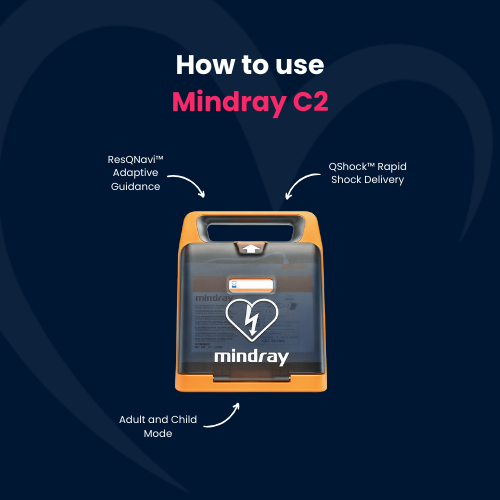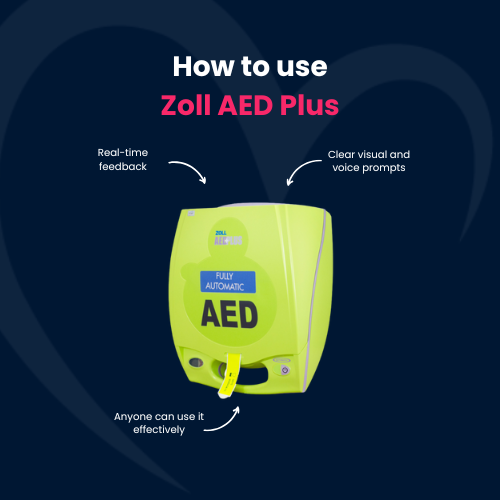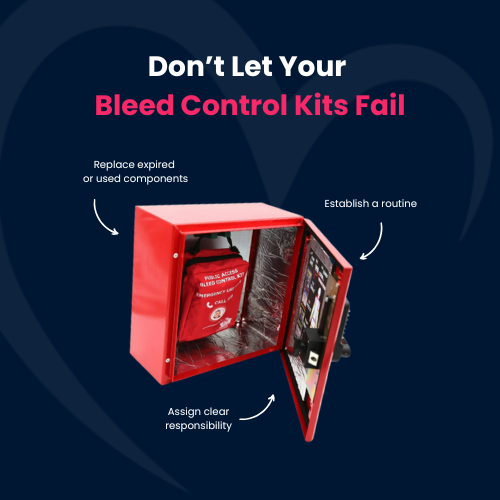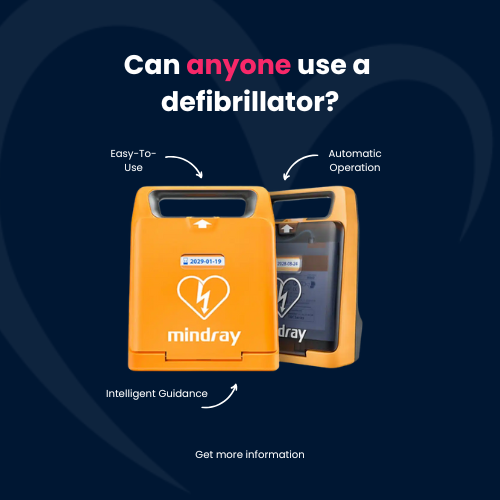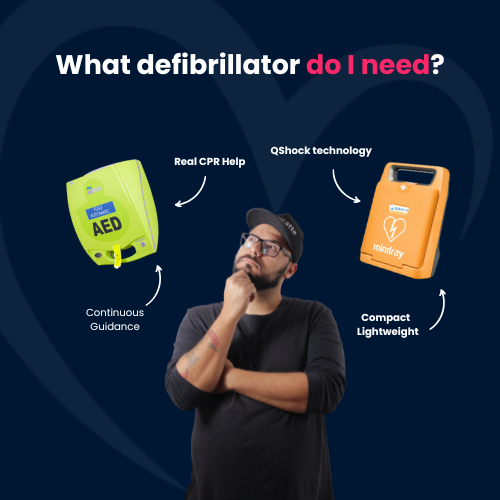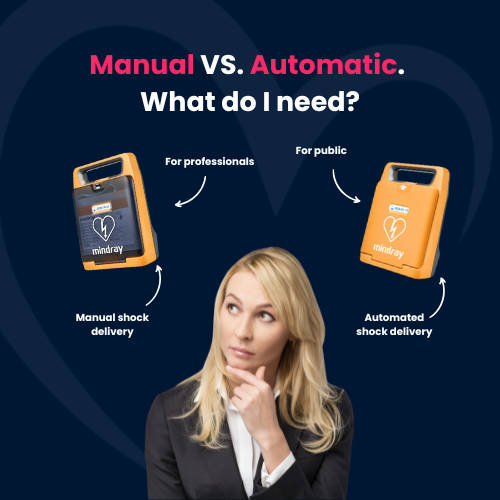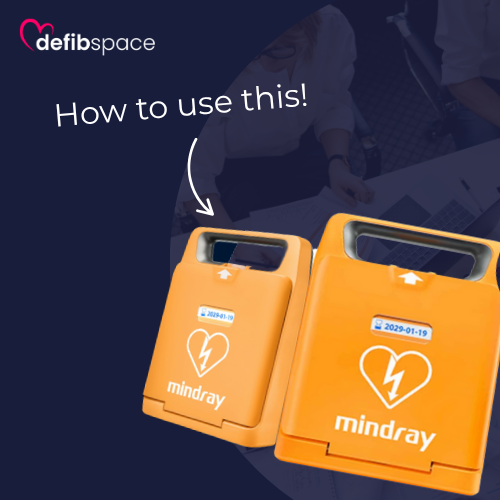defibrillator knowledge hub
Welcome to the Defibrillator Knowledge Hub – your go-to resource for practical guides, product comparisons, and expert advice.
Learn how to choose, use and maintain defibrillators for offices, gyms, schools, homes and public spaces. Stay prepared, informed and ready to respond in an emergency.
search our knowledge hub
How to use the Mindray C2
The Mindray BeneHeart C2 is an automated external defibrillator (AED) designed for both trained responders and members of the public.
How to use the Mindray Beneheart C1A
Unlike some models that require manual shock activation, the BeneHeart C1A delivers a shock automatically if one is advised. This reduces hesitation and ensures treatment is not delayed.
How to use the Zoll AED Plus
The ZOLL AED Plus is a fully automatic defibrillator designed to guide even untrained bystanders through a cardiac emergency. It provides clear visual and voice prompts at every stage of use, ensuring that critical steps are not missed.
IP Rating Mistakes For Workplace Defibrillators
Automated External Defibrillators (AEDs) save lives. But they can only do their job if they work first time, every time, regardless of the conditions.
Why Most Workplace Bleed Control Kits Fail
Most emergencies unfold rapidly and without warning. Ensuring your bleed control kit is operational and accessible can mean saving a life when seconds count.
Simple AED Practice Routine for School Staff
Every school faces medical emergencies sooner or later, and sudden cardiac arrest is among the most critical.
Do Defibrillators Need Regular Servicing?
Defibrillators, also called automated external defibrillators (AEDs), are designed to be simple to use and ready at a moment’s notice.
Can Anyone Use a defibrillator?
An automated external defibrillator (AED) is a portable medical device that analyses heart rhythm and delivers an electric shock if needed.
Comparing the Top Defibrillator Models for Home and Workplace Use
Automated External Defibrillators (AEDs) are becoming more common in both homes and workplaces across the UK.
What’s the Difference Between Automatic and Manual Defibrillators?
Defibrillators come in two main types: automatic and manual. While both serve the same core purpose, their operation, users, and contexts of use differ significantly.
Why First Aid and AED Refresher Courses Are Important
First aid and Automated External Defibrillator (AED) refresher courses are short training sessions that help individuals maintain their emergency response skills.
Where to Get Defibrillator Training Certified UK
Automated External Defibrillators (AEDs) are compact, user-friendly devices designed to deliver an electric shock to a person experiencing sudden cardiac arrest.
When to Replace AED Pads and Batteries
Automated External Defibrillators (AEDs) rely on two essential consumable components: pads and batteries. Both are critical for the device to function during a cardiac emergency.
Simple Checklist to Maintain Your Defibrillator
Defibrillators, also known as automated external defibrillators (AEDs), are designed to be low-maintenance medical devices.
Defibrillator on a Child: What You Need to Know
Cardiac arrest in children is uncommon; if it occurs, immediate action is essential. A defibrillator on a child can make the difference between life & death.
How to Use a Defibrillator: Step-by-Step Guide
A defibrillator is a portable device used to treat sudden cardiac arrest (SCA). This is a condition where the heart stops beating effectively, causing the person to collapse and stop breathing normally.
Why Knowing Public Defib Locations Can Save a Life
If someone drops to the floor and stops breathing, you’ve only got minutes to act.
How to Find the Nearest Defibrillator UK
When someone suffers a sudden cardiac arrest, time doesn’t just matter, it decides the outcome.
Best Defib Models that Work for Busy Spaces
Cardiac arrest doesn’t care if you’re working a building site or typing up a spreadsheet. It can hit anyone, anywhere and when it does, every second counts.
Why AEDs Are Needed for Workplace & Office Use
A cardiac arrest doesn’t wait for the right moment. It doesn’t care if you’re at home, out shopping or halfway through your morning meeting.

